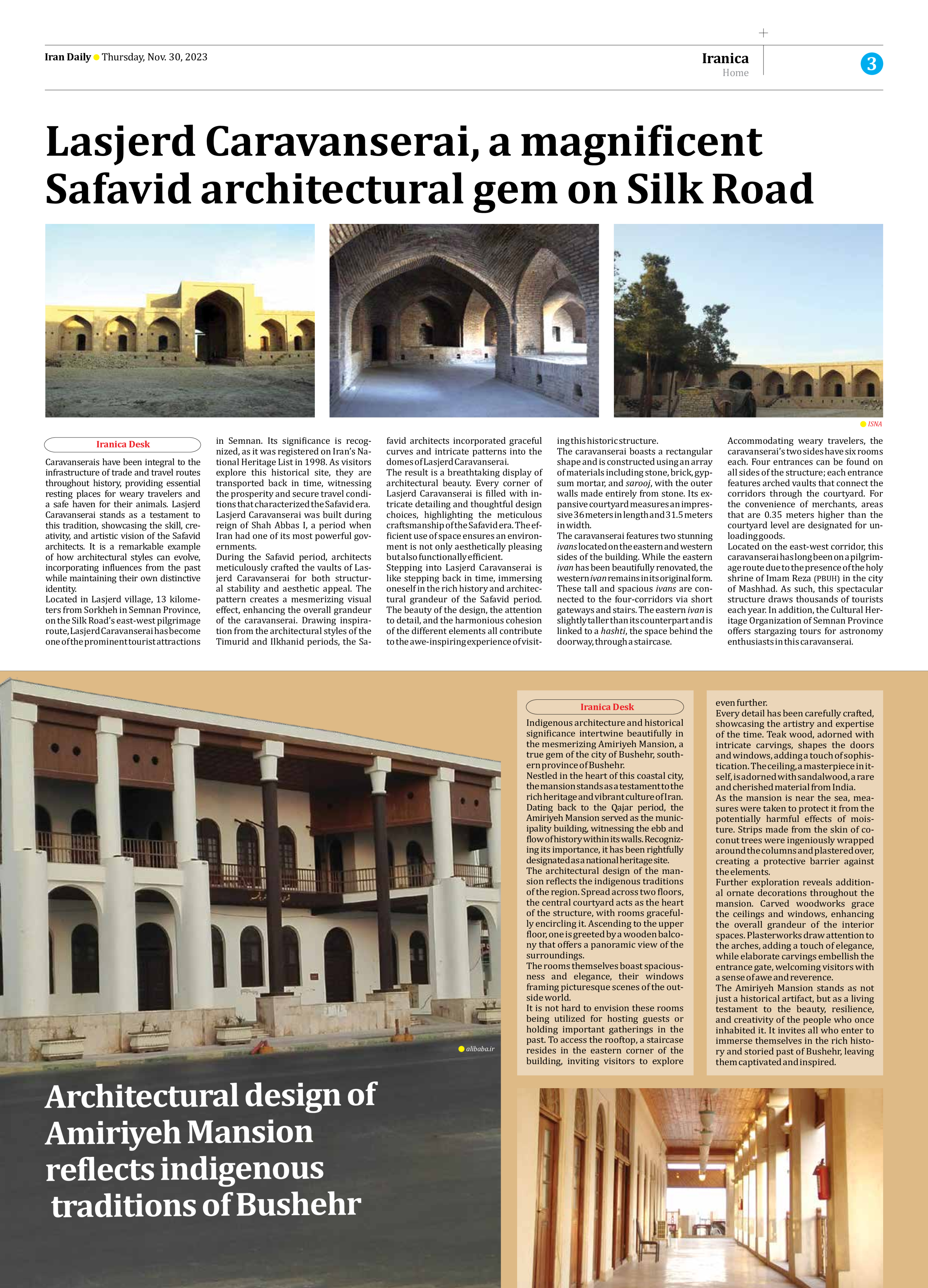
Lasjerd Caravanserai, a magnificent Safavid architectural gem on Silk Road
Caravanserais have been integral to the infrastructure of trade and travel routes throughout history, providing essential resting places for weary travelers and a safe haven for their animals. Lasjerd Caravanserai stands as a testament to this tradition, showcasing the skill, creativity, and artistic vision of the Safavid architects. It is a remarkable example of how architectural styles can evolve, incorporating influences from the past while maintaining their own distinctive identity.
Located in Lasjerd village, 13 kilometers from Sorkheh in Semnan Province, on the Silk Road’s east-west pilgrimage route, Lasjerd Caravanserai has become one of the prominent tourist attractions in Semnan. Its significance is recognized, as it was registered on Iran’s National Heritage List in 1998. As visitors explore this historical site, they are transported back in time, witnessing the prosperity and secure travel conditions that characterized the Safavid era.
Lasjerd Caravanserai was built during reign of Shah Abbas I, a period when Iran had one of its most powerful governments.
During the Safavid period, architects meticulously crafted the vaults of Lasjerd Caravanserai for both structural stability and aesthetic appeal. The pattern creates a mesmerizing visual effect, enhancing the overall grandeur of the caravanserai. Drawing inspiration from the architectural styles of the Timurid and Ilkhanid periods, the Safavid architects incorporated graceful curves and intricate patterns into the domes of Lasjerd Caravanserai.
The result is a breathtaking display of architectural beauty. Every corner of Lasjerd Caravanserai is filled with intricate detailing and thoughtful design choices, highlighting the meticulous craftsmanship of the Safavid era. The efficient use of space ensures an environment is not only aesthetically pleasing but also functionally efficient.
Stepping into Lasjerd Caravanserai is like stepping back in time, immersing oneself in the rich history and architectural grandeur of the Safavid period. The beauty of the design, the attention to detail, and the harmonious cohesion of the different elements all contribute to the awe-inspiring experience of visiting this historic structure.
The caravanserai boasts a rectangular shape and is constructed using an array of materials including stone, brick, gypsum mortar, and sarooj, with the outer walls made entirely from stone. Its expansive courtyard measures an impressive 36 meters in length and 31.5 meters in width.
The caravanserai features two stunning ivans located on the eastern and western sides of the building. While the eastern ivan has been beautifully renovated, the western ivan remains in its original form.
These tall and spacious ivans are connected to the four-corridors via short gateways and stairs. The eastern ivan is slightly taller than its counterpart and is linked to a hashti, the space behind the doorway, through a staircase.
Accommodating weary travelers, the caravanserai’s two sides have six rooms each. Four entrances can be found on all sides of the structure; each entrance features arched vaults that connect the corridors through the courtyard. For the convenience of merchants, areas that are 0.35 meters higher than the courtyard level are designated for unloading goods.
Located on the east-west corridor, this caravanserai has long been on a pilgrimage route due to the presence of the holy shrine of Imam Reza (PBUH) in the city of Mashhad. As such, this spectacular structure draws thousands of tourists each year. In addition, the Cultural Heritage Organization of Semnan Province offers stargazing tours for astronomy enthusiasts in this caravanserai.







